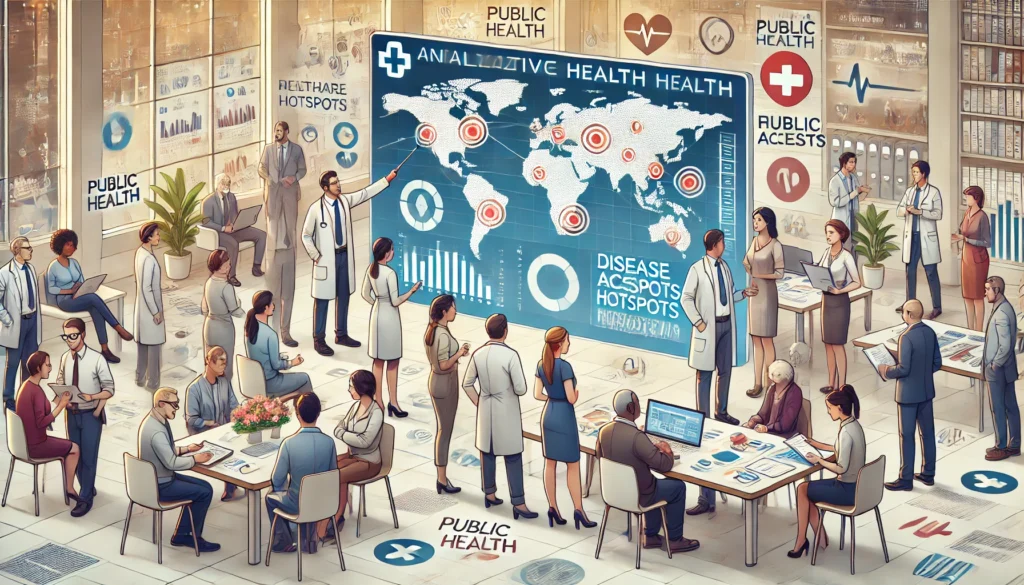Principles of Primary Health care
Subtopic:
Community Analysis

Community analysis
This involves pinpointing and acknowledging the most important and widespread illnesses, health issues, or unmet needs within a defined area.
Its purpose is to set the order of these concerns for action by the health ministry and healthcare personnel.
Community analysis
This involves pinpointing and acknowledging the most important and widespread illnesses, health issues, or unmet needs within a defined area.
Its purpose is to set the order of these concerns for action by the health ministry and healthcare personnel.
Evaluation: Evaluation is a methodical way of gathering, confirming, interpreting, and recording information related to the well-being of a community.
Factors: Factors are the specific elements examined during a community analysis. This follows a Community Survey.
Factors
Population Information:
Age Groups: Understanding the distribution of ages within the community, such as children, adults, and seniors.
Gender: Determining the proportion of males to females in the community.
Culture: Identifying shared practices and beliefs that influence health behaviors and healthcare access.
Socioeconomic Factors: Assessing the financial conditions and social status of people in the community.
Faith: Recognizing the different religions present and how they might affect health practices.
Statistics
Total Population: Gathering data on the total number of people, including specific groups like children under five.
Childhood Death Rate: Assessing the number of deaths of infants under one year per 1,000 live births.
Motherhood Death Rate: Assessing the number of deaths of women related to pregnancy or childbirth per 100,000 live births.
Local Economy
Income Sources: Identifying the primary ways community members earn a living, like farming, manufacturing, or services.
Local Businesses: Recognizing the types of industries or economic activities in the community.
Disease Occurrence:
Common Illnesses: Identifying frequently occurring diseases or health problems in the community.
Vaccination Coverage: Assessing the rates of immunization uptake for different age groups.
Education System:
Educational Institutions: Determining the number and types of schools available, such as elementary, high school, and colleges.
Accessibility of Schools: Understanding how far away educational facilities are from the community.
Educational Investment: Assessing what the community spends on education, like fees and materials.
School Health Services: Evaluating the health services available within schools.
Food and Diet:
Food Procurement: Identifying the main ways community members get their food, including farming, markets, or aid programs.
Dietary Habits: Assessing the quality and variety of the community’s food intake, including basic foods and access to nutritious options.
Hygiene Practices:
Water Sources: Determining the primary ways the community gets its water, like piped systems, wells, or rivers.
Land Use: Assessing how land is used and if it’s available for farming and other uses.
Toilet Facilities: Identifying the presence and use of latrines in the community.
Community Infrastructure:
Road Conditions: Assessing the quality and usability of roads within the community.
Transportation Methods: Identifying the main ways community members travel.
Steps in Community Analysis
Understanding the Community: Develop a foundational knowledge of the community by gathering information about its location, population details, culture, and economic status through research and discussions.
Discuss the Plan: Share the community analysis idea with colleagues or supervisors to get their input and potential resources.
Engage Community Leaders: Make contact and connect with community leaders to seek their approval and collaboration for the analysis.
Community Walk-Through: Physically visit the community to observe living conditions and infrastructure firsthand.
Community Immersion: Spend time within the community to build relationships and understand daily life.
Gather Community Information: Interact with community members to collect data on health, economic factors, and cultural practices using various methods.
Collaborate on Findings: Share collected data with colleagues to analyze and interpret the findings.
Identify and Prioritize Issues: Based on the data, identify and rank the major health concerns and needs within the community.
In summary,
Steps in community analysis:
Gain community knowledge
Share the plan with others
Contact community leaders
Tour the community
Spend time in the community
Collect community data
Discuss findings with colleagues
Diagnose problems and prioritize
Nursing Roles in Community Analysis
Collecting Information: Nurses gather data from community members through interviews or observations to learn about their health and available resources.
Assessing Health: Nurses evaluate the health of individuals and families by checking vital signs and gathering information on existing conditions.
Identifying Health Gaps: Nurses help pinpoint differences in health within the community by analyzing data related to various factors.
Partnering with the Community: Nurses work together with community members to understand their viewpoints and needs.
Respecting Culture: Nurses show respect for the community’s cultural beliefs and traditions during the analysis.
Providing Health Information: Nurses offer health education and promote awareness about prevention and healthy choices.
Documenting Findings: Nurses keep accurate records of assessment results and contribute to reports.
Working with the Team: Nurses collaborate with other healthcare professionals involved in the community analysis
Get in Touch
(+256) 790 036 252
(+256) 748 324 644
Info@nursesonlinediscussion.com
Kampala ,Uganda
© 2025 Nurses online discussion. All Rights Reserved Design & Developed by Opensigma.co

